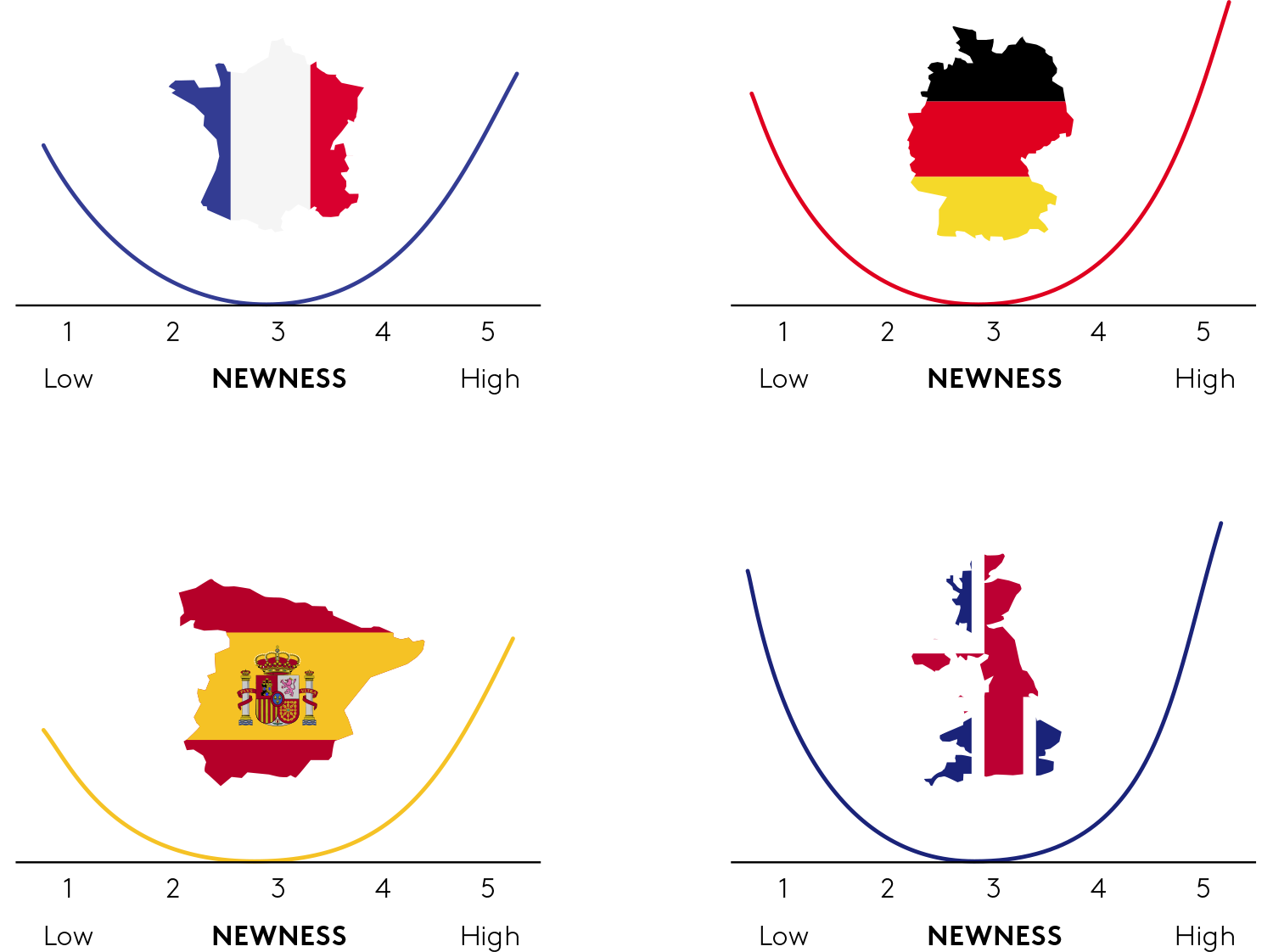Many brands are struggling with the changing context. The rise in ecommerce, a fragmented media landscape, changing consumer tensions and an increasing demand for sustainable products are just a few of the challenges that brands are facing.
The big question is: what did successful brands do, and what should they do now to continue to grow?
We know from BrandZ data that companies that continued to innovate during the last recession were 9 times more likely to survive. Turn the clock forward to 2020 and the pattern is the same. Brands that continued to innovate during the pandemic continued to see growth.
Many brands ‘won’ in 2020... but the real winners in share terms were the ones who had been innovating
2020 vs 2019 top share winners vs bottom share losers

Source: BG20 4 countries in Europe – Germany, Ireland, Spain, UK. Innovation = new brand/sub-brand, Renovation = new size/type/flavour. 2600 brands
However, it appears that it is not enough to just innovate. Most innovations tend to fail: it seems that the sweet spot is making a small tweak or a more significant incremental move.
Don’t get caught in the middle on new products – true innovation or minor renovations perform best

Source: Europanel and Professor J-B Steenkamp study – 104 new products France, 67 Germany, 56 Spain, 72 UK
Innovations have to drive short-term sales, but not at the detriment of long-term brand power. So, what does it mean to innovate in a changing world?
Innovation plays a central role for brand growth, and it is imperative in driving recovery. It provides the opportunity for a brand to be meaningfully different. And, if we unpack the BrandZ measure of ‘Perceived Innovation’, it also means taking a position of leadership, creativity, and disruption. Thus, Brand and Innovation development must be inextricably linked; there is a brand equity flow from Brand to Innovation and vice versa.
Take for example Zoom, who made huge share gains, grew in measures of ‘meaningful’ and ‘different’, and continue to be seen as disruptive and creative. They have stayed very much true to their brand. One might suggest they were afforded a headwind by the need to work from home. By contrast, brands like Gordons gin in the UK have also continued to gain share, battling against the loss of the on-trade business, by focussing on the growing off-trade occasions with their flavoured gins, low alcohol and ready-to-drink formats. Both brands made meaningful and different moves through innovation.
Another example is Walkers crisps, who had three innovations feature in the top 10 UK brand launches of 2020 based on sales and incrementality.
So how should brands go about innovating in a changing world?
Firstly, they need to think about the changing context and doing what is right for the brand to drive short-term growth and long-term equity. They need to understand the impact each new innovation will have both on incremental sales, but also on brand equity, at each critical stage of innovation. Brands need to move with agility and consumer insight, releasing themselves from the traditional linear stage gate process to embrace creativity, take risks to drive leadership, and look for opportunities to disrupt.
To do this, they must rethink the innovation process and mindset, moving beyond traditional stage gate thinking to a learn, test, and learn approach. They must embrace brand thinking across the innovation journey, focussing on understanding the context and increasingly testing and learning in focus of specific consumer contexts.
Brands, therefore, must go on a learning journey, identifying a meaningfully different opportunity, and developing and testing it with their target audiences – with short-term growth and long-term equity in mind. They must think about effective execution in this changing media landscape and then stay close to the innovation in market – and pivot against the ever-changing contextual backdrop as needed.
What we’ve learnt about innovating in a crisis to help drive growth:
- Understand the changing context and changing human needs, desires and tensions to identify a meaningful direction for your brand.
- Develop innovations that not only drive sales in the short term but build your longer-term brand equity (a watch out when moving at speed).
- Move from an obsession with testing to an obsession with learning.
- Use data, tools, technology and expertise to build a learning journey that is right for your brand.
Get in touch to speak to one of our innovation experts to talk about how you can improve your innovation success.
This article was originally published in Kantar BrandZ 2021 most valuable global brands.


